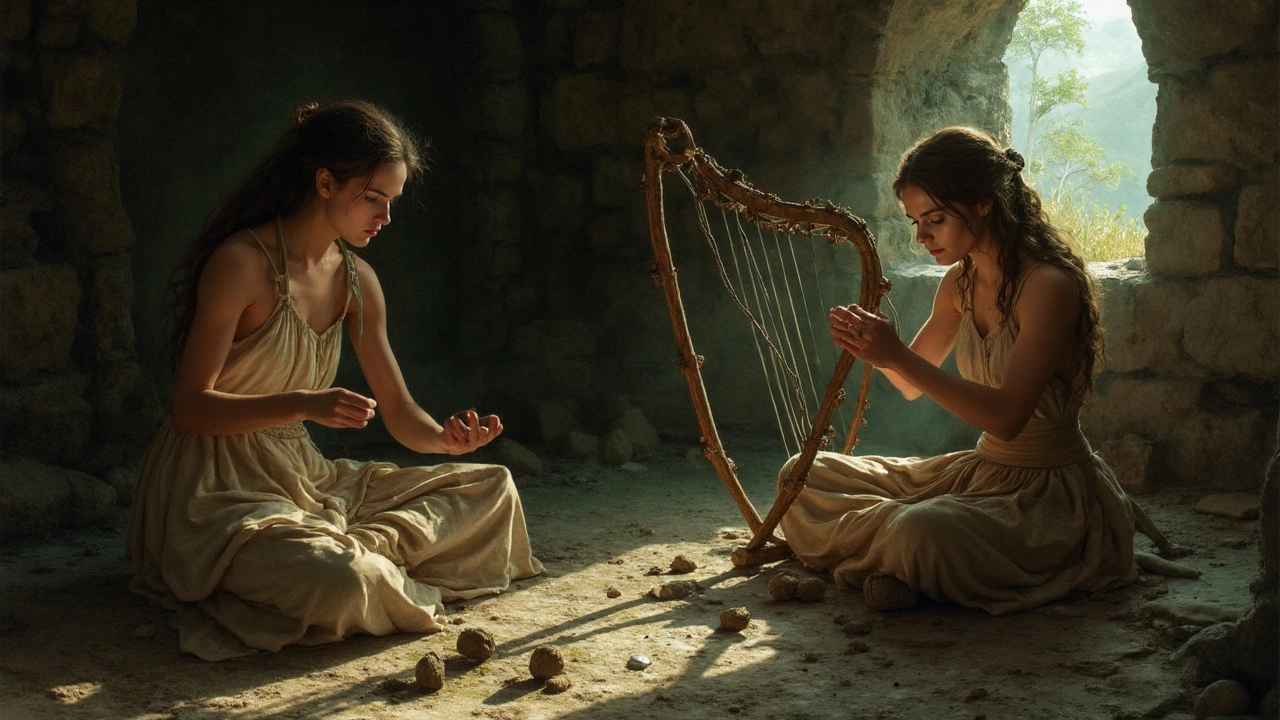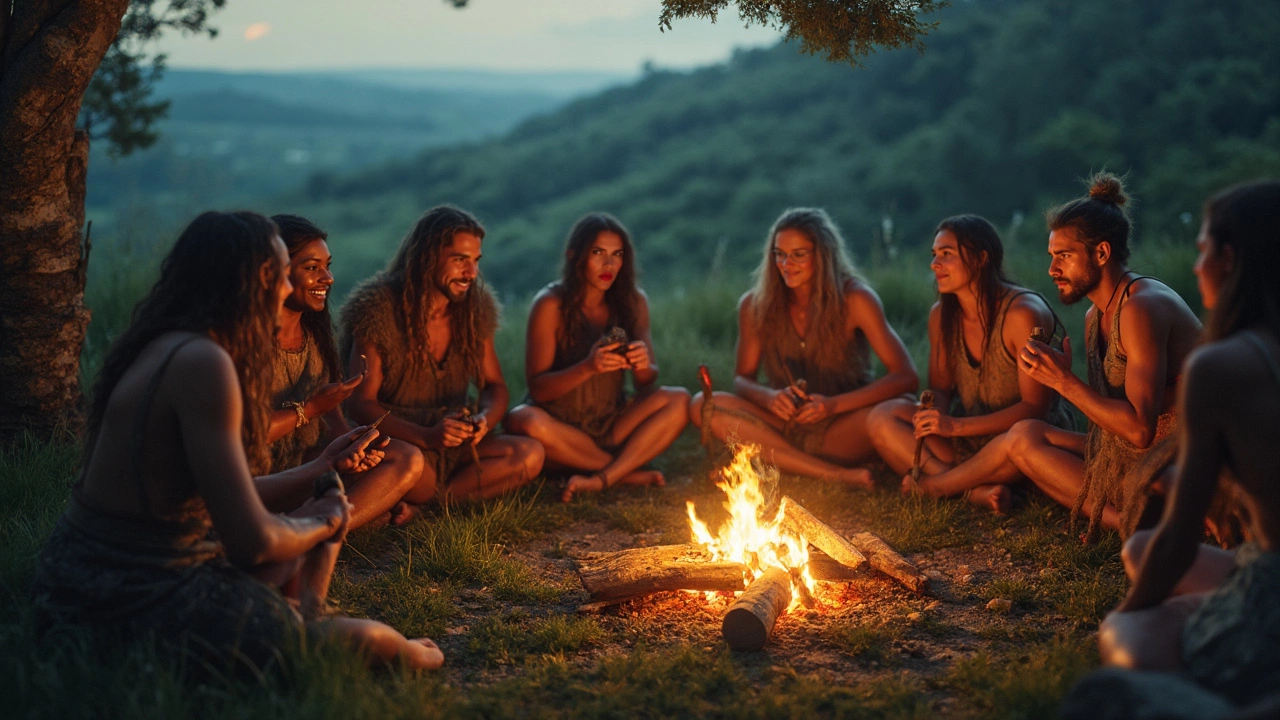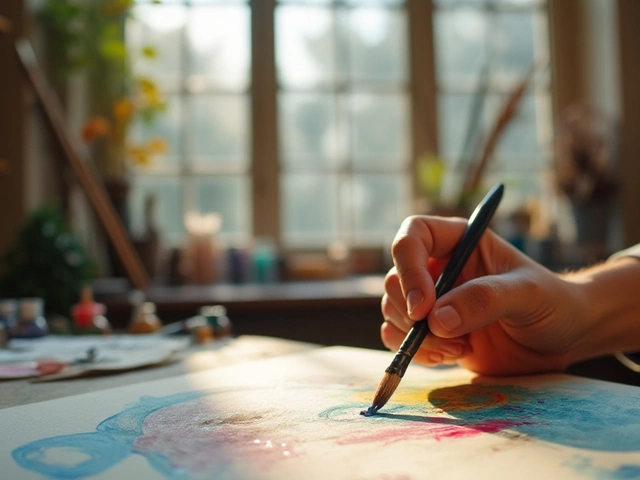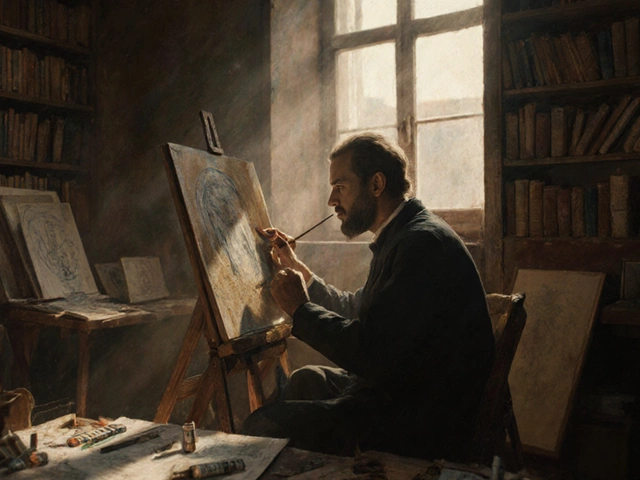Ever caught yourself humming and wondered if people did that thousands of years ago? Turns out, music has been part of human life way longer than written language or even farming. And no, our ancient ancestors weren’t strumming guitars or banging on pianos—they started with whatever they had on hand. Think sticks, stones, maybe even their own voices.
Imagine this: You’re sitting around a fire, the night is quiet, and the only way to break the silence is with clapping, singing, or drumming on rocks. That’s where it all began. The very first music wasn’t really about entertainment. It served a purpose—calling others, celebrating, comforting, or even keeping away wild animals. In fact, some researchers believe music and rhythm helped early humans bond and work together.
So before you stream your next playlist, remember: every song owes something to those first simple beats and tunes. If you’re into making music yourself, try this—next time you’re outside, tap a rock or hum a simple melody, just like people did ages ago. It’s a quick way to connect with music’s real roots.
- Sounds Before Instruments
- The Oldest Instruments Ever Found
- Why Did Humans Make Music?
- Echoes of the Ancient in Today’s Songs
Sounds Before Instruments
Long before anyone even thought of carving a flute or stretching animal skin over a drum, the first music in the world probably came straight from the human body and whatever was lying around. Early humans used their voices for humming, chanting, and calling out. It's not hard to picture someone clapping hands or stomping feet just to make some noise. Scientists point out that infants as young as a few months old start picking up on rhythm, which hints that rhythm might be hardwired in us.
Animals definitely played a role in shaping early music, too. People would hear birds singing, wolves howling, and probably tried to copy those sounds. Some researchers think the first meaningful music was made to imitate nature—maybe to call animals, warn others of danger, or just for fun during work or rest. There’s real evidence that in hunter-gatherer groups today, people still use singing and clapping for everything from passing time to marking a safe path in the dark.
Let’s put it in perspective—no fancy gear needed. Here are some examples of the pre-instrument "toolkit":
- Voice: Humming, singing, shouting, chanting, or mimicking animal sounds.
- Hands and Feet: Clapping, snapping, or stomping for rhythm.
- Mouth Sounds: Clicking, whistling, or buzzing.
- Anything Nearby: Rocks, sticks, or even water could make percussive sounds.
Here’s what experts have learned from studies on the oldest human groups still using these methods today:
| Method | Purpose | Modern Example |
|---|---|---|
| Clapping/Chanting | Group bonding, timing work | Sports cheers, military marches |
| Singing | Storytelling, comfort, warnings | Lullabies, folk songs |
| Natural Sound Mimicry | Communication, hunting | Animal impressions in songs |
The first music probably sounded nothing like what we call music today, but it did the exact same job—it brought people together, gave comfort, and helped humans make sense of their world.
The Oldest Instruments Ever Found
So, what did the first instruments actually look like? Archaeologists have dug up some attention-grabbing clues—these things are legit relics from the deep past. No, we’re not talking about rusty old guitars or keys; we’re going way further back. The oldest instruments discovered so far are flutes carved from animal bones and mammoth ivory, and they date back as far as 40,000 years ago.
The spotlight usually falls on the bone flute uncovered in Hohle Fels Cave in Germany. Scientists say this five-holed flute was made from a vulture wing bone. Imagine using an actual bird bone to play music! Here’s the thing: making this wasn’t some random accident. Early humans had to plan it out, hollow the bone, and drill the right holes to get different notes. Clearly, they understood sound and rhythm pretty well for their time.
Flutes weren’t the only game in town, though. Researchers have also found simple drums (probably animal skin stretched over hollow logs) and basic percussion instruments like rocks or nuts strung together—think early-day maracas. All these first tools prove people couldn’t help making music, even when resources were scarce.
| Instrument | Location Found | Approximate Age |
|---|---|---|
| Bone Flute (Hohle Fels) | Germany | Around 40,000 years |
| Ivoried Mammoth Flute | Geissenklösterle Cave, Germany | 35,000 – 43,000 years |
| Neanderthal Flute | Divje Babe Cave, Slovenia | About 50,000 years (debated) |
If you look at these dates, it’s clear that first music didn’t start yesterday. Our ancestors were already obsessed with sound, and they actually made stuff to help express it. These finds also show up close how creative humans were, even when life was just about surviving. Want to try a little experiment? Grab a plastic tube or a straw, blow across the top, and see if you can make a note. That’s about as close as you’ll get to playing “prehistoric pop” in your kitchen.

Why Did Humans Make Music?
You probably think of music as something for fun or chilling out, but the real story goes way deeper. The urge to make music isn’t just a modern thing—it’s wired into us. Way back, music helped people do all sorts of practical stuff: signal each other, keep rhythm when working, or join in celebrations. Some scientists say the roots of music are at least 40,000 years old, based on ancient flutes found in Germany.
Here’s the cool part: making music together is like social glue. Picture a tribe chanting or drumming in sync—it builds trust and teamwork. Even today, singing together makes groups feel close, whether it’s at a party or in a stadium. Studies show groups who make music in sync feel friendlier and work better as a team. It probably helped small communities survive tougher times by bringing them together.
Music also helped with learning and memory. Think about nursery rhymes—they make stuff easy to remember. Ancient folks used simple tunes to pass down hunting tricks or family stories long before anyone wrote things down.
Music was a key tool for rituals, too. Ancient societies used songs and rhythms in ceremonies. Researchers dug up proof in old cave paintings and ancient tools that some events just weren’t complete without music. From sending out signals with horns to welcoming new babies, music covered it all. Check out how early humans likely used music in everyday life:
- Communicating across distance before language was clear
- Warning about danger or signaling the start of a hunt
- Celebrating birth, victories, and special events
- Soothing kids or calming the community during tough times
- Carrying out rituals or religious ceremonies
Here’s a quick breakdown of what science tells us about why music was such a big deal from the start:
| Purpose | Evidence |
|---|---|
| Building Social Bonds | Groups who sang or drummed together were closer-knit, studies say |
| Memory & Learning | Early chants helped people remember important info |
| Rituals & Spirituality | Old artifacts and cave art show music used in ceremonies |
| Communication | Primitive instruments like horns used for signaling |
So next time you listen to your favorite song, you’re tapping into something ancient. Humans have always needed music—it gave us a way to connect, survive, and remember. That’s why the first music in the world wasn’t just noise; it was the original group chat for our ancestors.
Echoes of the Ancient in Today’s Songs
Think old music is just a thing of museums? Not even close. The sounds and styles cooked up by our ancestors still show up in today’s biggest hits. It’s like every pop song, rap track, or movie score is carrying a little souvenir from the stone age. You can still spot bits of ancient music if you know where to look.
Let’s talk ancient instruments. The flute is actually one of the oldest instruments ever found—the famous Divje Babe flute from Slovenia is over 40,000 years old. Fast forward to now: flutes pop up everywhere, from Lizzo’s viral flute solos to haunting melodies in film soundtracks. Drums? Cavemen figured out the power of a simple beat way before DJs did. Today, every genre—from EDM to rock—relies on steady rhythms cooked up with technology, but it’s all based on those first drum patterns people played with sticks and logs.
Even singing styles carry old roots. For instance, throat singing—think Tuvan or Mongolian—goes way back and still pops up in modern music (even bands like The HU or soundtracks for movies and games). The human urge to harmonize or chant in groups is straight out of ancient rituals, turning into today’s stadium anthems and choral hooks.
Here’s a simple list of where you’ll catch ancient vibes in modern tracks:
- World music samples in rap and hip-hop—beats or chants lifted from traditional African, Asian, or Latin songs.
- Handclaps and stomps in pop and folk music—think Queen’s "We Will Rock You." Pure prehistoric group rhythm.
- Traditional instruments in popular music—did you know the didgeridoo shows up in songs from artists like Jamiroquai?
- Call-and-response vocals in gospel, R&B, and even some chart-topping hits.
Some fun numbers? Check out this table showing just how often old-school instrument sounds get used today:
| Ancient Instrument | Modern Genres Used | Estimated Tracks (2024 Spotify Data) |
|---|---|---|
| Flute | Pop, Hip-Hop, Classical, Jazz | 200,000+ |
| Drum (various types) | All genres | Millions |
| Didgeridoo | World, Pop, Electronic | 3,500+ |
| Throat Singing | Rock, Metal, World, Soundtracks | 1,000+ |
Even the basic structures of songs—like having a chorus that gets everyone singing—go all the way back to ancient chants around the fire. If you really listen, every beat, melody, and hook is part of a much older story. So next time a tune gets stuck in your head, odds are it’s borrowing a trick from our ancestors.





